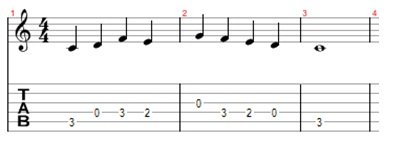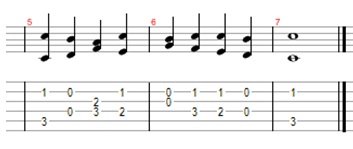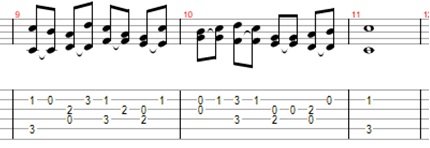A Bit of HistoryRight when music first started on conceivable instruments basically all music was monophonic, no chords or harmony just one single voice at once. This was largely due to a lack of a cohesive tuning system so the chords we know today would frankly have come about purely as a fluke. Now the church saw an opportunity to use music to sing the praise of god, only thing was it had to be suitably more sombre than the music of street performers so they set about working on making polyphony and succeeded. Right now at this point in terms of polyphony we were limited to just notes in unison, perfect fourths, perfect fifths and octaves. Instruments at this point still didnít have the tuning we use today so thirds and sixths were seen as very dissonant (in fact first use of thirds in harmony was in a vocal mass due to the fact the voice can adjust its tuning live unlike instruments of the time. So with the advent of polyphony and instruments tuning becoming closer to a standard counterpoint developed. CounterpointRight now the backstory is done letís get to looking at what counterpoint actually is. The idea of counterpoint is two independent melodies played at the same time sounding harmonious. The first instance of this was species counterpoint and it starts with a cantus firmus, this is the base to our counterpoint Ė the starting melody. Species counterpoint is divided into first species, second species, fourth species (no need to go further). First species counterpoint means the counter melody plays one note for every note of the cantus firmus, second species it plays two notes to every note of the cantus firmus and so on. The cantus firmus usually comprises of one note length for each note of the melody (and for examples it will to). Now there are some rules to the cantus firmus, traditionally it has an arch like contour (do a dot to dot on the sheet music to get what I mean), starts and ends on the tonic, doesnít play the same note two times in a row, doesnít use accidentals, if it makes a large leap itís in a different motion to the one it was moving in. Those are really the main rules there are some other technicalities but they are for the overly fussy. So you may be thinking that with all the rules itís quite restrictive but remember species counterpoint is purely academic, and if you can master it then you should be able to do what you like with counterpoint and have it sound good. Without further ado hereís the cantus firmus weíre going to use:  It fitís the rules and itís simple to work with, I also included the tab so itís accessible for everyone. First species counterpointThe rules of species counterpoint (as it was in the 16th century) concerning the counter melody is that: 1. The first note of the counter melody should be either unison, fifth or octave. 2. Any direct motion from one perfect interval to another is not allowed 3. No notes repeated more than 3 times 4. No fourths they are considered dissonant 5. No chromatic motion (when using an out of scale note which you sometimes have to do for point 10) 6. No seconds or sevenths 7. No unison notes except on first bar 8. Direct motion from one perfect consonance to another is bad (both cantus firmus and counter melody go up or down in pitch and form perfect consonance) 9. Melodic movement of a diminished fifth is not allowed. 10. Penultimate bar counter melody must be a major sixth above the cantus firmus 11. It ends on an octave Now thatís a lot of rules and if you followed them you would get a very 16th century sound and for the sake of this lesson I will follow them but you donít have to follow any of them when writing counterpoint, even Bach broke the rules. So obeying all the rules here is our cantus firmus plus counter melody:  Itís not very interesting to listen to Iíll grant you that but it is technically counterpoint, it also doesnít sound very independent either but this is only the very start. Second species counterpointHere we start to allow more dissonances into the counter melody and begin to make it more independent, so here are the new additions to the rules: 1. The first note of the counter melody over a note of the cantus firmus must be consonant 2. The second note may be dissonant if the notes before and after it move by a step 3. The first note over two successive notes of the cantus firmus cannot be a fifth unless the note between them leaps a fourth, fifth or minor sixth in the same direction as the cantus firmus 4. In the penultimate bar the first note above the cantus firmus must be a perfect fifth above followed by a major sixth. Below you will see the second species counter melody Iíve tied the notes of the cantus firmus because Iím writing this out on guitar pro and it isnít made for multiple staffs or note values in a space so Iím sorry for how messy it looks.  Look at the second and third beats of the first bar this is an example of consecutive fifths as the first note, see how above the second beat I start on the fifth, leap up a fourth to the D and then go down to a fifth above the next note. This is an acceptable use of consecutive fifths. Also see how I throw fourths in but not on the first note above a note of the cantus firmus, So right now you are realising how hard it is to write a counter melody that fits all the rules over a cantus firmus, if youíve tried to write your own cantus firmus youíre probably struggling even more, but as long as you understand intervals and my grammar hasnít let me down you should get it after a few reads. So now go away start experimenting and use different note lengths tie a note from the counter melody across two notes of the cantus firmus, use seconds, fourths and sevenths as much as you like and throw in out of scale notes. Just think of the intervals between the notes you are using and the sound they evoke. One final thought is when writing your base melody donít have a counter melody playing over all of it use it in key parts, when people wrote for an orchestra they didnít have every instrument playing at once all the way through the changed it about. The same texture for too long tires the ear, so spice it up a little. Final noteNow as I've been writing these counter melodies to follow the rules they aren't very interesting and the cantus firmus is from a textbook and used as an exercise for writing counter melodies over it hasn't sounded very interesting. However when you come to use this in actual music don't follow the rules rigorously and make sure you're counter melodies sound good on their own as well as with the base melody. You stick something rubbish on top of something good it won't end up good. Any questions ask and I'll keep an eye on this to answer because I'm getting the scary feeling I've wrote this too much like a university textbook...
Comments:
01
09.15.2011  gshredder2112 gshredder2112
Dude,this a sweet lesson.Really man kudos. I might need to re-read |
Copyright © 2004-2017 All-Guitar-Chords.com. All rights reserved.


